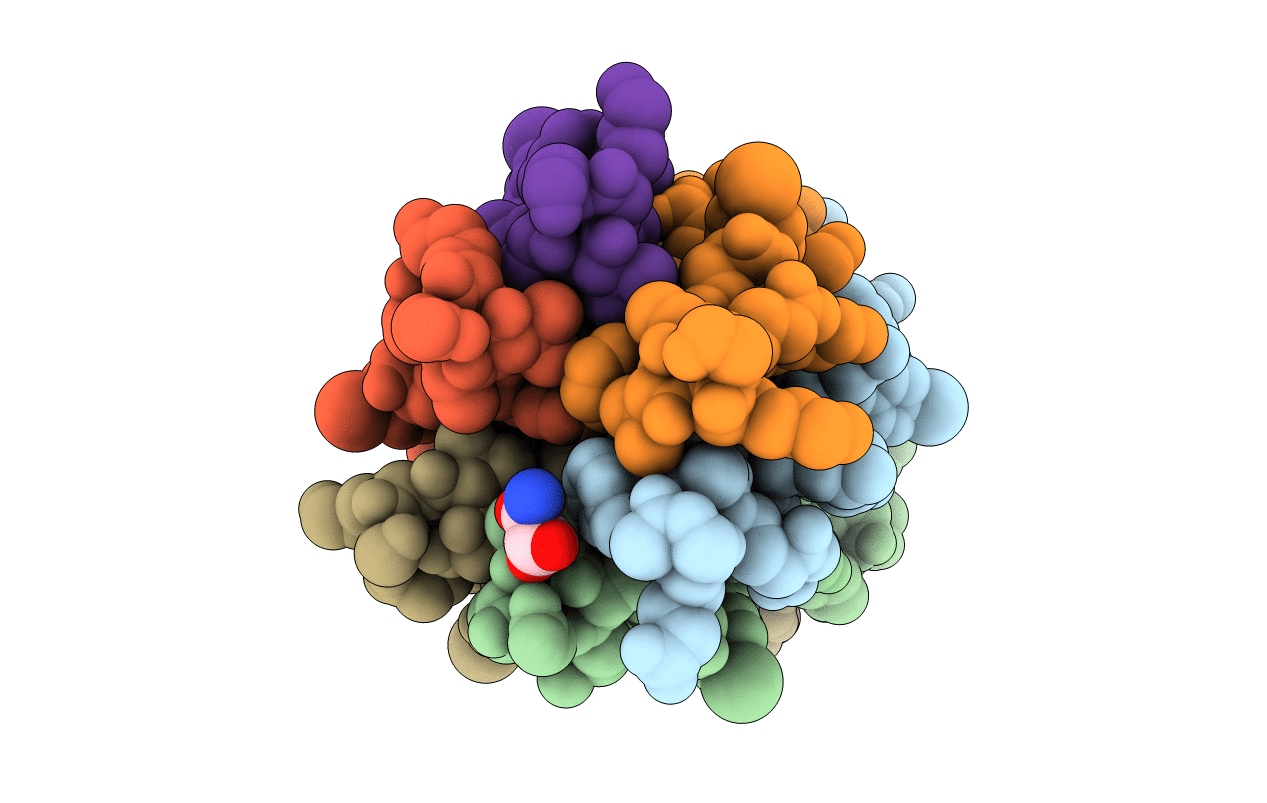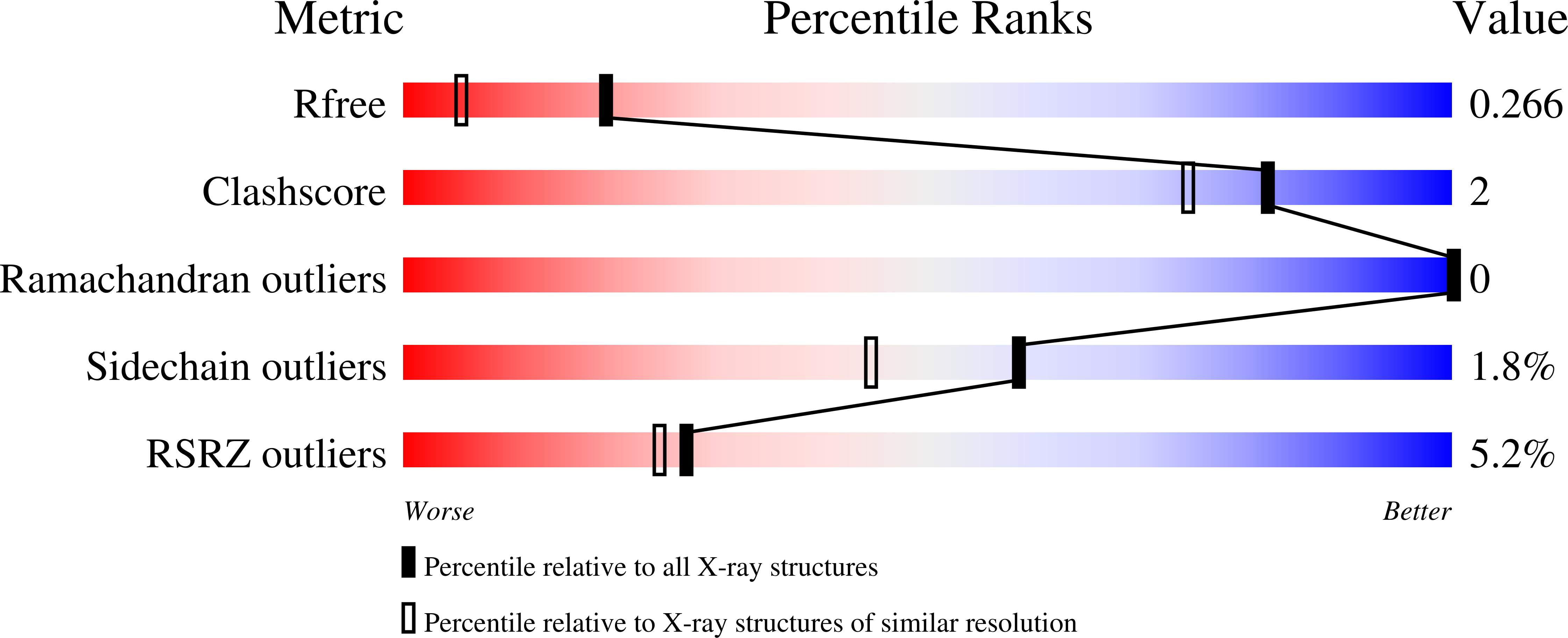
Deposition Date
2021-01-24
Release Date
2021-05-19
Last Version Date
2025-04-09
Entry Detail
PDB ID:
7BO8
Keywords:
Title:
A hexameric de novo coiled-coil assembly: CC-Type2-(VaYd)4-Y3F-W19(BrPhe)-Y24F.
Biological Source:
Source Organism:
synthetic construct (Taxon ID: 32630)
Method Details:
Experimental Method:
Resolution:
1.84 Å
R-Value Free:
0.26
R-Value Work:
0.20
R-Value Observed:
0.20
Space Group:
P 21 21 21


